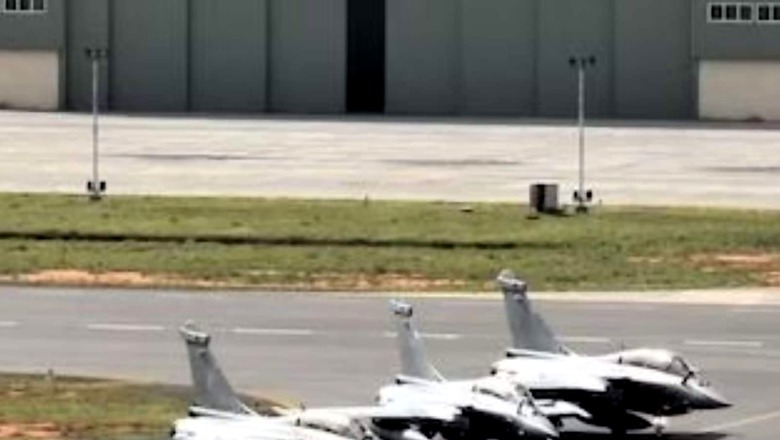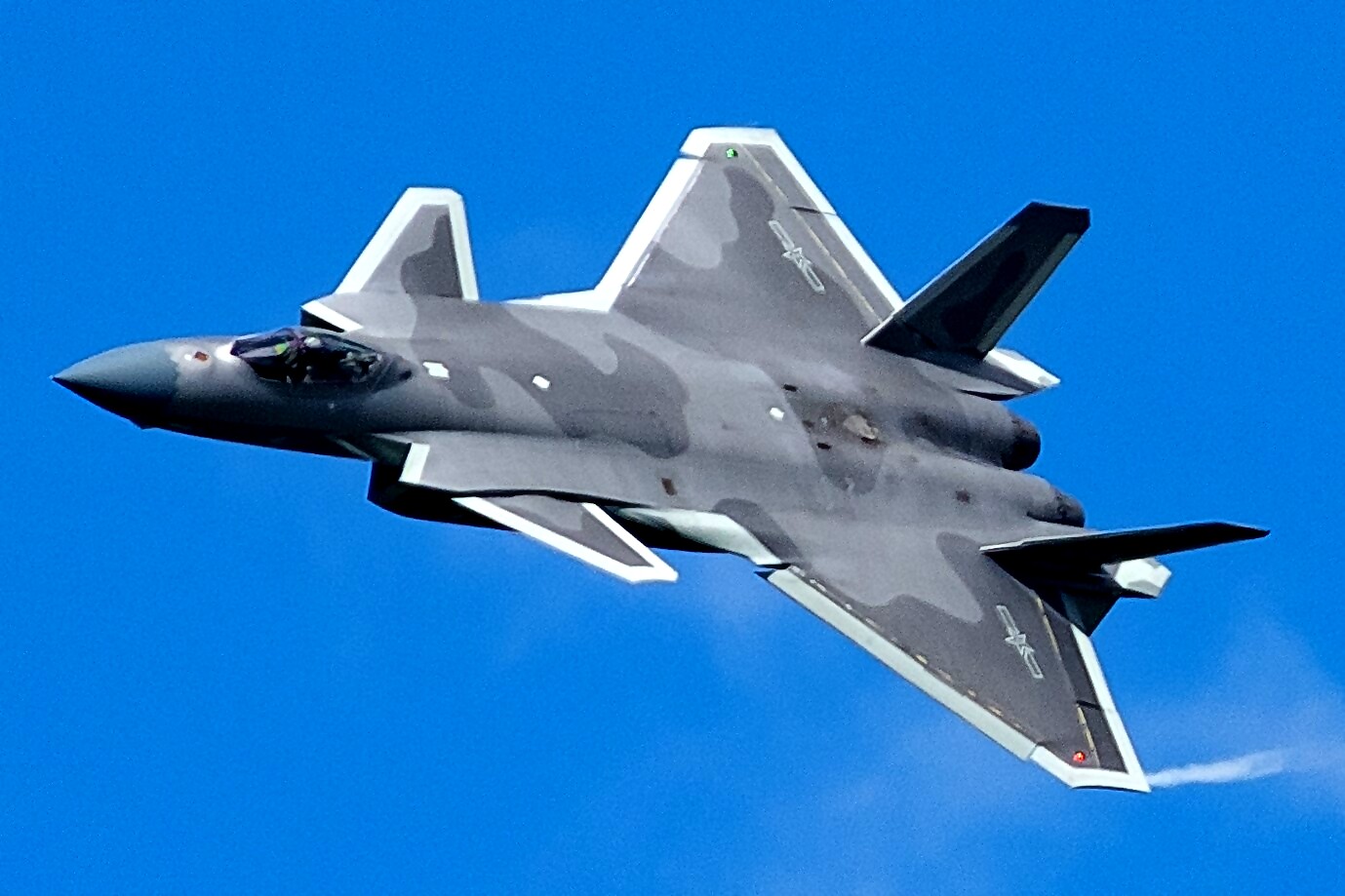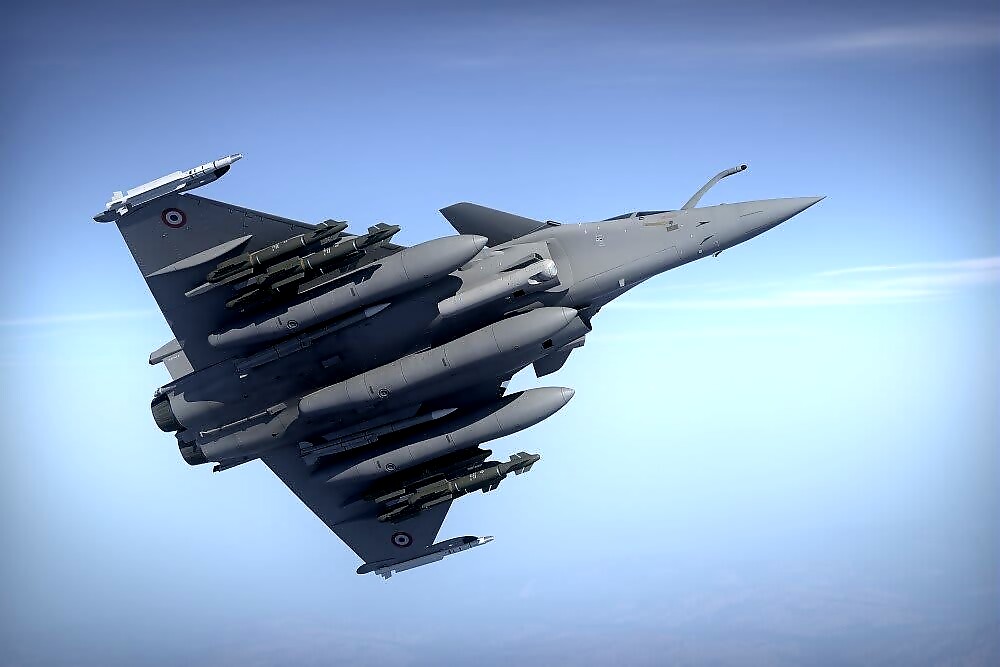
views
Emphasising induction of modern aircraft to sustain and enhance the Indian Air Force’s (IAF) combat potential, Air Chief Marshal VR Chaudhari has said that force urgently needs 5-6 squadrons of 4.5 generation aircraft. Air power remains the most potent means of prosecuting war. It provides long range, precision, and flexibility. Modern fighters are omni-role, thus can do multiple missions in a single sortie. The ranges have been extended with aerial refuelling. The AEW&C gives cover deep in enemy territory.
India is one of the most threatened nations in the world. It has two nuclear weapon-possessing neighbours. With both there are serious boundary disputes, wars and border skirmishes. For long it is very clear that for ground or sea war to be won there is a need for dominance in the air. The fighter aircraft remains the most potent platform for both offensive and defensive operations. While many are predicting the future to be unmanned, practically all the fifth and sixth generation fighters that will see the world through this century are evolving as manned fighters.
The IAF today is at an all-time low of 30 fighter squadrons. The government has already announced that the four remaining MiG-21 Bison squadrons will be retired by 2025. In this period, only around two squadrons of LCA, at best, will induct. This would mean further depletion of the squadron strength. At the same time Pakistan Air Force (PAF) currently has over 450 fighter aircraft in 22 fighter squadrons. China has nearly 59 fighter brigades in the theatre commands with each having 24-28 aircraft. Additional 20 plus Brigades are with the PLA Air Force (PLAAF) HQ at Beijing. China also has additional air power with the PLA Navy (PLAN) with nearly 500 aircraft and an expanding number of aircraft carriers. Clearly India’s neighbours are expanding air power. Significant part of the PLAAF may be committed on China’s Pacific front, but air power’s speed and flexibility allows forces to be brought to bear in other sectors in a short period.

Growing PLAAF: Know the Adversary
With the support of indigenous industry which is producing all genres of aerial platforms, PLAAF is fast acquiring top-end systems and weapons of global class and reach. There is much greater emphasis on modern technologies, including stealth, hypersonic, Artificial Intelligence (AI), cyber, electronic warfare, and long range missiles. PLAAF also reoriented its flying training and tactics, and there is much higher emphasis on realistic exercises. The PLAAF has made major changes in its operational doctrine based on global reach requirements. Air defence of critical assets; long-range offensive precision strikes; integrated battlefield support missions; intelligence surveillance and reconnaissance (ISR); information operations; and strategic air-transport reach are on priority. Integration of air and space will support both offensive and defensive operations. PLAAF is preparing for hybrid network-centric war. The PLAAF is trying to increase exposure to air exercises to compensate for low actual war exposure. The PLAAF is closing the gap with Western air forces across a broad spectrum of capabilities, such as aircraft performance, command and control, and electronic warfare.
The PLAAF is the third largest in the world, and of its nearly 1,700 combat aircraft, 900 are 4th generation-plus. Nearly 150 fifth-generation J-20 stealth fighters have been built. Second stealth aircraft, J-31 development is being hastened. PLAAF also operates nearly 170 H-6 jet bomber variants. The extended-range H-6K variant can carry six air-launched Cruise missiles. They have significant AEW&C and Flight Refuelling Aircraft (FRA) and numbers are going up. PLAAF also has a large number of indigenous unmanned aerial vehicles (UAV) of global standards. Many of these carry armaments (UCAV). They are developing new long-range stealth bomber H-20 to strike regional and global targets. It is expected to be ready by 2025. PLAAF is also inducting state of the art long range aerial missiles with ranges up to 300 kilometres.
The PLAAF believes in long range offensive precision-strikes. There will be coordination with People’s Liberation Army Rocket Force (PLARF). It has multi-layered air defence systems. China’s extensive constellation of surveillance satellites with short revisit cycles greatly support surveillance and targeting. The PLAAF gives greater importance to information, electronic and cyber warfare. The PLAAF also coordinates closely with the PLA Strategic Support Force (PLASSF). The PLAAF’s regular exercises include large force engagements, with PLA and PLA Navy. Their exercises in Tibet have increased.
IAF Current Broad Capabilities
IAF is down to 30 fighter squadrons. These broadly include two of Rafale, 12 Su 30MKI, four MiG 21 Bison, three each of MiG 29 and Mirage 2000, six of Jaguar, and two of LCA. The Rafale aircraft is clearly superior to China’s J-10, J-11, and Su-27 fighter jets. Armed with long-range Meteor and MICA beyond visual range (BVR) air-to-air missiles, the Rafale fighters. The SCALP cruise missile and Hammer glide bombs have very high accuracy. Rafale also has the best Electronic warfare suite in the region. The Sukhoi Su-30MKI is the IAF’s primary air superiority fighter with capability to perform long range air-to-ground strike missions. Mirage 2000 and the MiG 29 have all been upgraded. IAF has only three large AWACS aircraft and three indigenous DRDO developed AEW&C aircraft. Similarly IAF has only six IL-78 Flight Refueling Aircraft (FRA). Both these fleets need augmentation for a continental size country like India which has also to cover the Indian Ocean Region (IOR).

India has a good chain of integrated radars to support network-centric offensive and defensive operations. The IAF’s legacy surface-to-air missile systems like the SAM-3 Pechora and SAM 8 OSA-AK are being upgraded. With the induction of a large number of indigenous Akash AD systems, and the already inducting five Russian S-400 systems from Russia, the AD coverage will be significant. To cover the large Chinese border, more systems are being inducted. With the induction of the MICA, Meteor, Astra, SCALP, BrahMos and Hammer, among others, IAF has a significant aerial weapons inventory. IAF already has the reach from the Persian Gulf to the Straits of Malacca. From the island territories it can reach parts of the South China Sea with inflight refueling. IAF is regularly exercising and increasing interoperability with major air forces of the world. But the IAF needs numbers.
IAF Operational Capabilities across Himalayas
The IAF has a clear advantage in numbers of airfields most of which are at lower altitude vis-à-vis China. But China is upgrading infrastructure and bringing in more assets. IAF airfields need more hardened shelters. More radars and air defence systems need to be positioned. Any air campaign would have to be aggressive, and executed simultaneously against different spread out target systems. China’s war plans are to launch an initial barrage of surface attack missiles to knock off critical Indian infrastructure including airfields. India would have to defend against such an attack with air defence weapons. India would then have to achieve local sectorial air superiority. It must be remembered that the effect of neutralizing just two Chinese airfields in each sector would have much more severe implications for them than if the same was to happen for India. India should thus concentrate on neutralising the PLAAF airfield using surface and air-launched missiles, and build inventories accordingly.
Interdiction will pay high dividends in the mountains. Destroying a few bridges could throttle logistics chains and supplies. Creating weapon triggered landslides could block roads. Attacks against convoys on the very few roads would create bottle-necks. Air can provide both kinetic and non-kinetic options with pin point accuracy. It will influence outcomes and actions of the surface forces. It can simultaneously produce physical as well as psychological effects. Both the fighter aircraft and attack helicopters will be employed for this. UCAVs would be used for interdiction, battlefield strikes and anti-tank and anti-personnel operations. The transport and helicopters would also provide the airlift of troops and military hardware inter and intra sector. Inter-valley transfers may be required in changing battle situations. The IAF has significant reach and capability on this count.
Due to limitations of ground radars in the mountains, greater dependence would have to be on AWACS. Numbers will have to go up. Satellites and UAVs will be required for ISR. Numbers would have to go up to reduce revisit time. The IAF will have to continue to transform from just being platform-based to being capability-based. Effects based, network centric operations would be employed. The side that better employs electronic warfare and cyber means and tools will have advantage. Securing own networks and denying the same to adversaries will be important. Air and space platforms will greatly support cyber and electronic warfare operations much deeper into the enemy territory.
Two-Front Threat
Today China and Pakistan have deep strategic friendship. Nearly 60 percent of Pakistan Air Force (PAF) is made up of Chinese aircraft. PAF already has nearly 130 JF-17 ‘Thunder’. 25 J-10CE aircraft are under supply. PAF AEW&C and FRA are of Chinese origin. They have commonality in armaments. PLAAF and PAF regularly carry out flying training exercises called the Shaheen Series. Their interoperability levels are high. Both have territorial interests in Jammu and Kashmir and Ladakh. In case of Sino-Indian conflict, Pakistan could allow use of its airbases to the PLAAF. It could also open another front. The Indian military will have to factor this aspect. IAF will surely require a larger number of fighter aircraft.
Rebuilding IAF Numbers
Considering just the Chinese threat, India needs to rebuild the authorised 42 fighter squadrons. To rebuild IAF fighter numbers, many approaches are required on priority. Only the seven two-seater are left to be delivered among the ordered 40 LCA Mk 1. On 20 June 2022, the Tejas Mark 1A prototype completed its first flight. LCA Mk 1A deliveries are planned to start in early 2024. Some delays are already being projected. The 83 aircraft will be delivered by 2029. Effectively that would mean just 16 aircraft a year. That is too less to make good numbers. LCA production must go up to 24 a year, Even if it means IAF placing more orders. Notwithstanding the ‘aatmanirbharta’ push, India would have to make a one-time purchase of the 114 fighter aircraft from abroad. The Request for Information (RFI) for MRFA Tender has had responses from eight global aircraft manufacturers. The release of Request for Proposal (RFP) has been overdue. Even if it was issued today, it would take 5-6 years to select and induct the first fighter. It must be hastened. The second option is to make a follow-on order of Rafale.
Infrastructure on two airbases exists. We have already paid for the India specific modifications. Overall cost would be lesser this time. The third activity is to hasten development of the LCA Mk2 by pumping in more funds and increasing the team size. Next is to give early CCS clearance for Advanced Medium Combat Aircraft (AMCA). There should be a dedicated team and management of the AMCA project. Private sector will be brought in at a very early stage.
Induction of eight LCA Mk1 and Mk1A squadrons and 114 new fighters by 2030 could take the IAF to around 37-38 fighter squadrons by 2030. The target is to get to 42 squadrons by 2038. The end state could be 14 squadrons of Su-30 MKI, two each of Mirage 2000 and MiG 29, 12 squadrons of LCA variants, two of Rafale, six of the new fighter, and four of Advanced Medium Combat Aircraft (AMCA). Effectively IAF may have to stretch the Mirage and MiG 29 fleets. If AMCA could come faster the Mirage 2000, and MiG 29 could be retired faster. These figures are achievable as long as timely decisions are taken, funds allotted, and there are no serious development delays in LCA Mk 2 and AMCA. IAF must also target to have 8 large and 10 smaller AWACS, at least 12 FRA aircraft by 2030. The DRDO project for these must be hastened with foreign support. Till then, it is best to take a few on lease. The 12 deficient fighter squadrons and the nearly 12 more to retire by 2038 will require significant funding. Capital budget would have to increase.
Some often suggest that since Rafale and Su-30 MKI can achieve much greater effects than the older MiG 21s, why IAF should continue to seek 42 squadrons. The argument is flawed. India’s adversaries already have fifth generation fighters. They are not cutting down numbers. Type of aircraft and weapon platforms must be comparable to the adversary.
India also needs to invest more in game-changer technologies. These include cyber and electronic warfare, artificial intelligence, unmanned systems, hypersonic, among others. Hypersonic flight and weapons will be difficult to engage. They will act as force multipliers against high-value targets. There is a lot of action in Directed Energy Weapons (DEW). Lasers that can burn incoming missile electronics or dazzle electro-optical sensors.
For India to become significant, it must also master aircraft engine, and AESA radar technologies. Joint venture route is the best to imbibe high-end technologies. We need very long range weapons, including aerial missiles with around 400 kilometres ranges. Similarly, air-launched cruise missiles with ranges of around 1,500 kilometres.
There is a backlog of modernisation. The obsolescence sets in much faster for aerial systems. To stem the increasing gap with China, India perhaps needs to increase its defence allocations, from current 2.15 percent of GDP to around 2.5 percent. IAF is well trained and operationally well exposed. The IAF will be much better placed against the PLAAF once numbers are rebuilt. It has to be a whole of the nation approach. Time act is now.
The writer is Director General, Centre for Air Power Studies. The views expressed in this article are those of the author and do not represent the stand of this publication.
Read all the Latest Opinions here

















Comments
0 comment